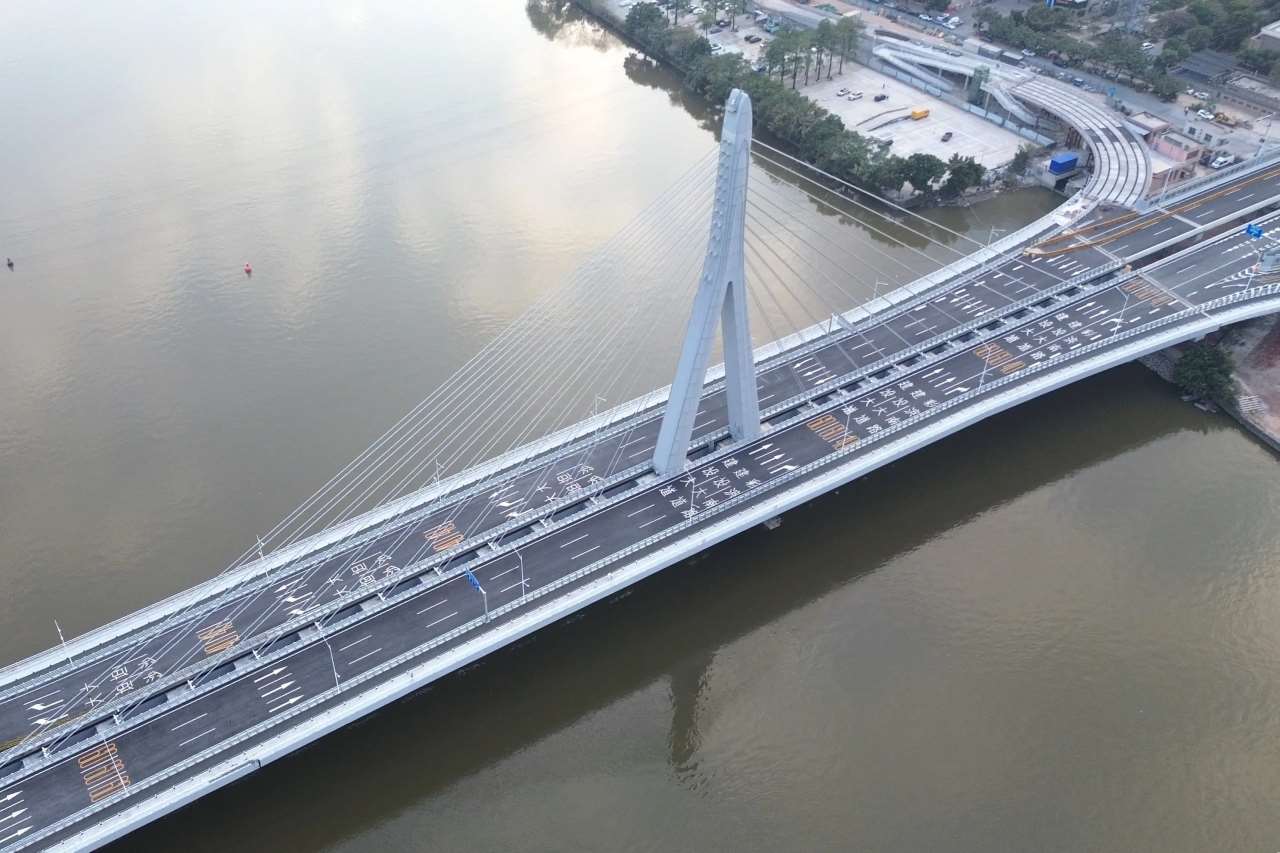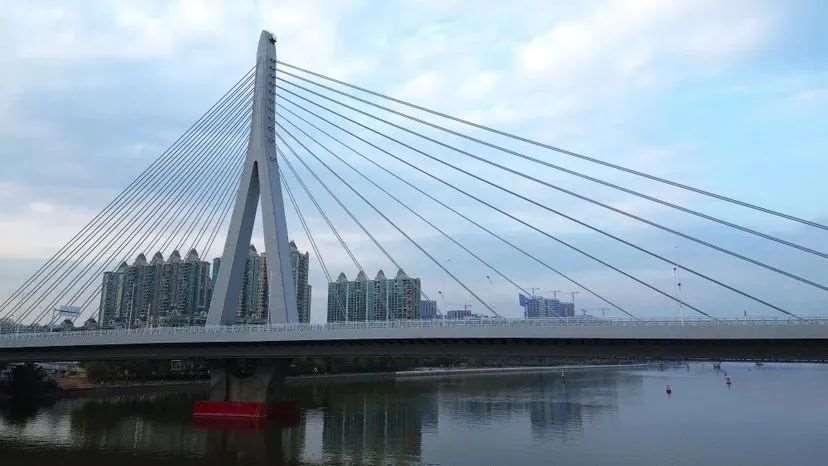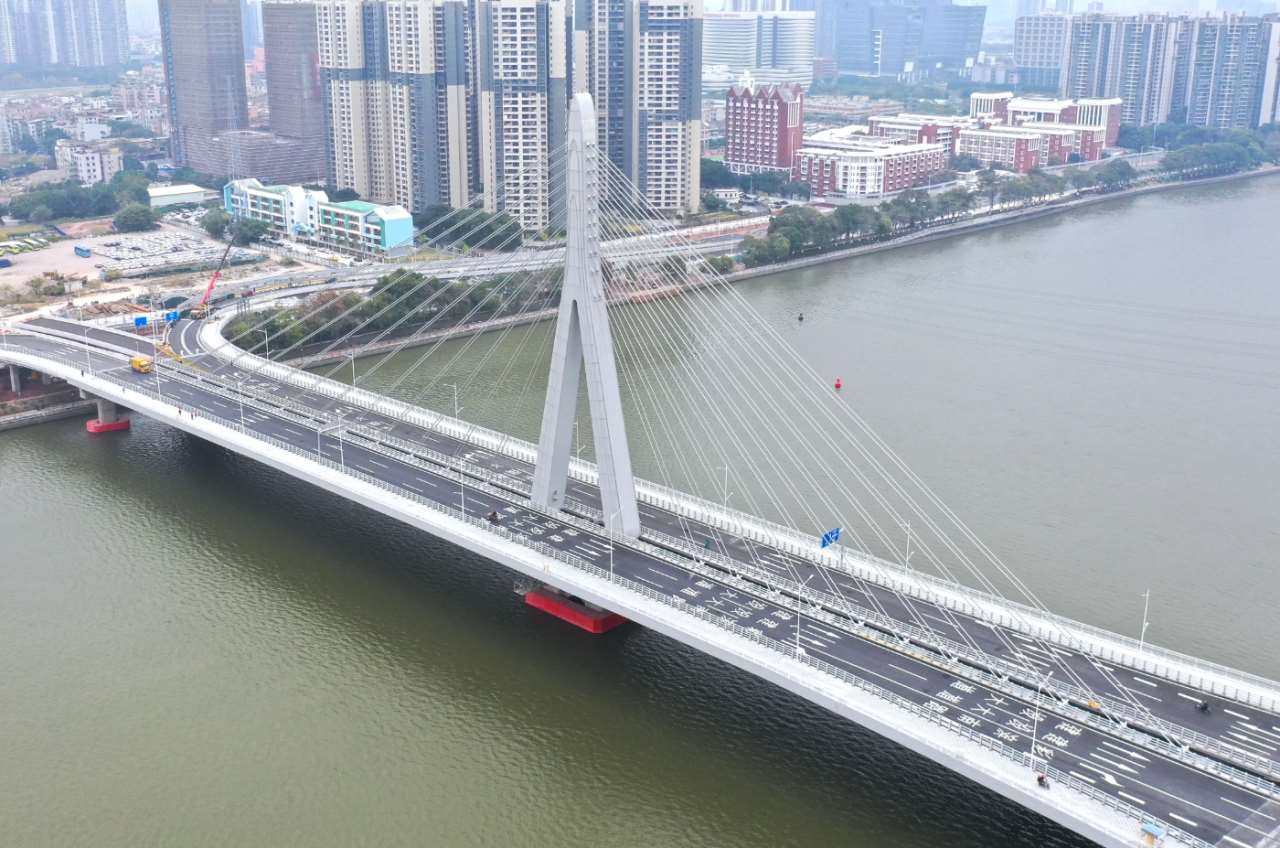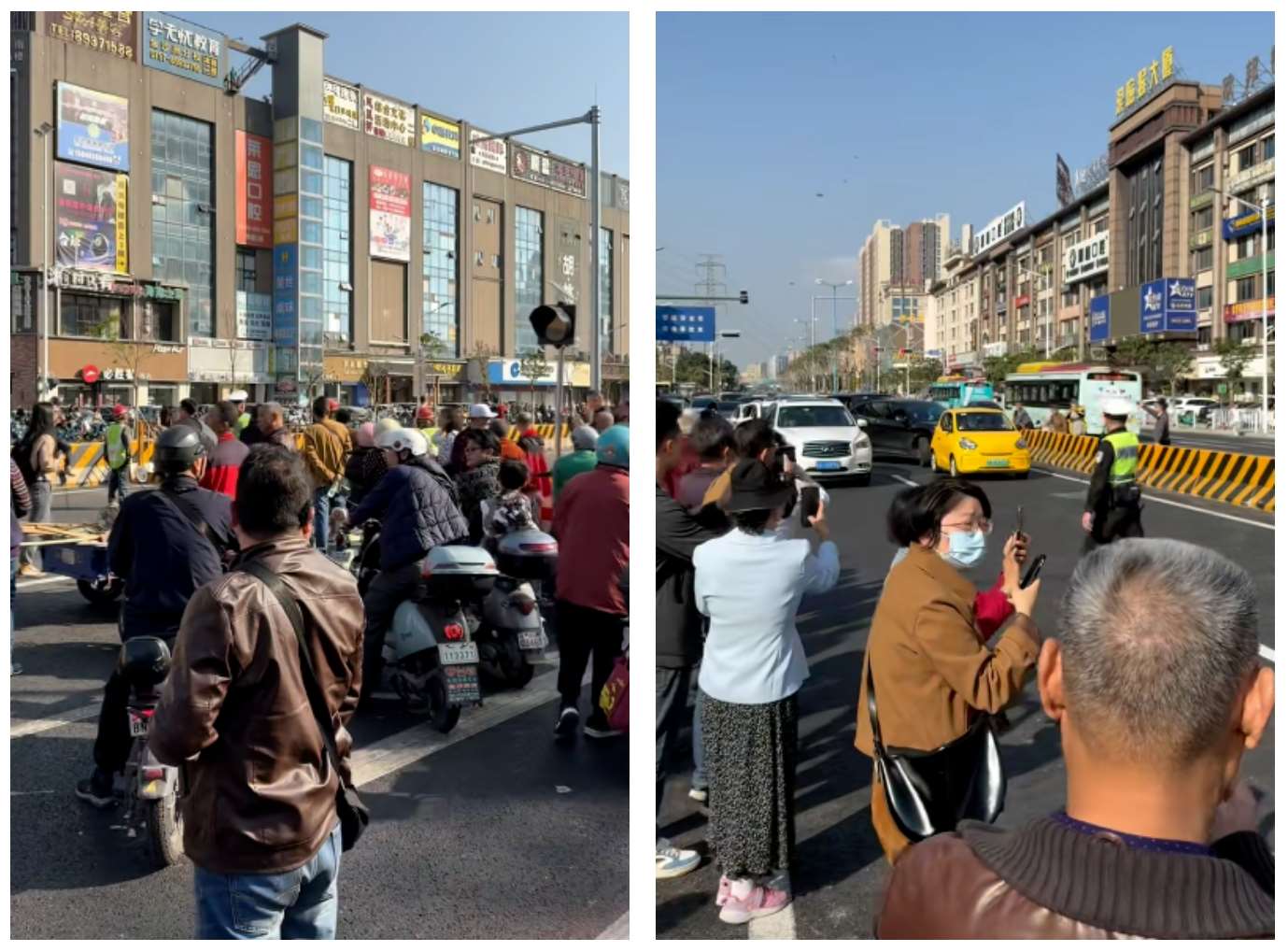Company News

New Gateway Unveiled: Phase I of Guangfo Bridge System Project Opens to Traffic!
On January 25, the highly anticipated mainline of Phase I of the Guangfo Bridge System Project, designed by T.Y. Lin International (China), officially opened to traffic, marking a historic milestone!

Project Overview
Spanning approximately 1.3 kilometers, Phase I of the Guangfo Bridge System Project starts from Foshan’s Nanhai District Construction Avenue in the west, crosses the Baisha River, and connects to roads on Guangzhou’s Liwan District Dadansha Island. As a critical transportation hub in the Guangfo border area and a key initiative for regional integration, the project includes one main bridge and four ramp bridges. Designed as an urban arterial road meeting secondary highway standards, the mainline features a dual six-lane configuration with a design speed of 60 km/h. This infrastructure not only addresses growing traffic demands but also ensures safer and more efficient commutes for residents.

Innovative Design with Symbolic Meaning
The main bridge, a 278-meter single-tower, central double-cable-plane steel-concrete composite girder cable-stayed bridge, showcases a striking asymmetrical streamlined design. Its hybrid steel-concrete tower stands 100.5 meters tall, shaped like an inverted "Y." "The tower’s design draws inspiration from interlocking hands, symbolizing Guangzhou and Foshan joining forces to break down regional barriers through infrastructure and jointly write a new chapter in regional integration," explained Xu Daguang, deputy chief bridge engineer at T.Y. Lin International (China) and lead designer of the bridge.

Commitment to Green Development
Throughout construction, the project adhered to green and sustainable development principles. The team prioritized ecological conservation, implementing rigorous environmental protection measures at every stage—from planning and design to execution—to safeguard the region’s long-term ecological health.

Easing Traffic Pressure, Boosting Integration
Chronic traffic congestion between Guangzhou and Foshan has long hindered deeper regional collaboration. With urban expansion intensifying cross-city commutes and logistics, existing infrastructure struggled to keep pace. The completion of Phase I now dramatically reduces travel time between the two cities. Previously circuitous routes are replaced by direct access, alleviating commuter stress and slashing logistics costs. This enhanced connectivity promises greater flexibility for residents and businesses in choosing living and working locations across the twin cities.
Economic Catalyst and Regional Synergy
The bridge serves as a powerful catalyst for economic growth, unlocking industrial synergy. Guangzhou, a South China economic hub rich in finance, technology, and cultural resources, complements Foshan’s manufacturing prowess in furniture, ceramics, and machinery. Seamless connectivity will foster efficient resource integration, creating a mutually beneficial economic landscape. Strategically, the bridge dismantles historical spatial divides, enabling coordinated urban planning, optimized land use, and infrastructure alignment across the region.
Public Enthusiasm and Future Vision
On opening day, crowds from both cities arrived early to secure the best spots for the inaugural crossing. Spanning Guangzhou’s Baiyun, Liwan districts and Foshan’s Nanhai District, the bridge not only elevates transportation links but also injects fresh momentum into economic and cultural exchanges, heralding a new era of Guangfo integration.
As the ribbon was cut, the bridge stood as a testament to urban innovation and cross-city collaboration—a steel-and-concrete handshake bridging past divides and forging a shared future.



















